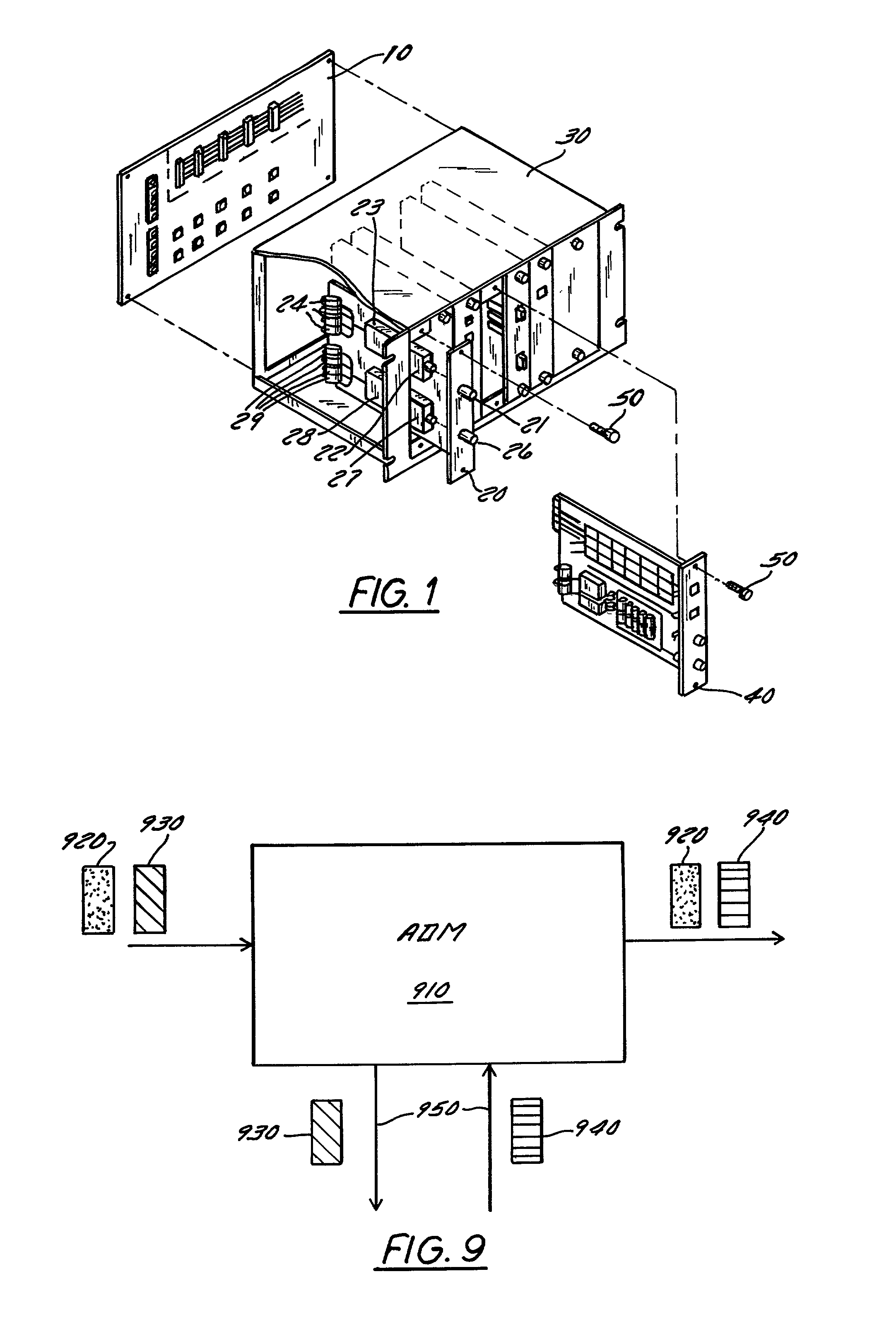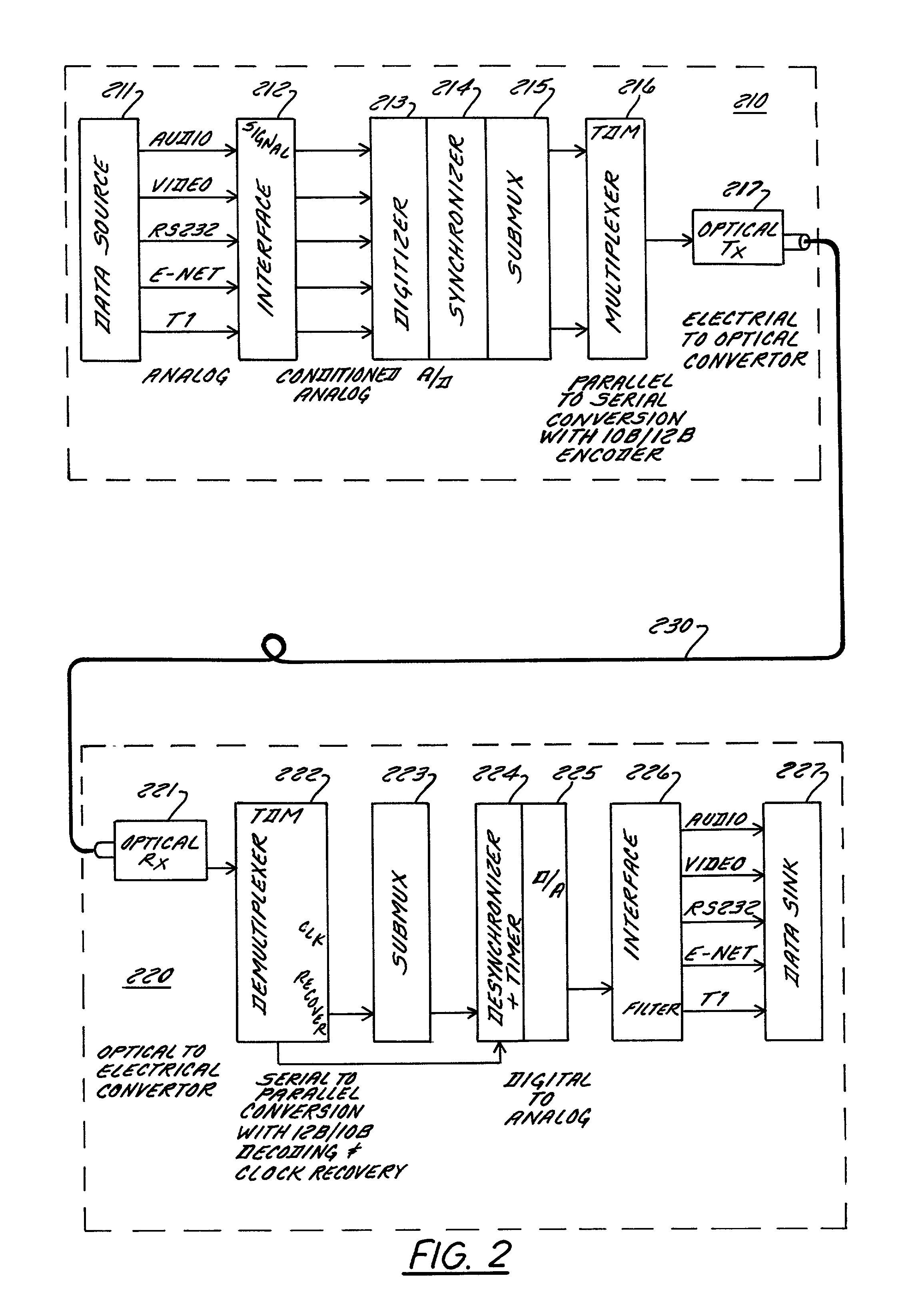Metropolitan area network switching system and method of operation thereof
a technology of metropolitan area network and switching system, which is applied in the direction of data switching network, multiplex communication, duplex signal operation, etc., can solve the problems of inefficient operation of network that transfers continuous data in the past, control information cannot be transmitted between routing switchers on interconnects that are being used by the network to transfer time sensitive user data
- Summary
- Abstract
- Description
- Claims
- Application Information
AI Technical Summary
Benefits of technology
Problems solved by technology
Method used
Image
Examples
example 1
[0136] Referring now to FIG. 17, a first example uses different detail numerals to identify subcomponents which can be different. One of the most usefull router modal states is a star mode 2400. The star state depicted in FIG. 17 includes a router / switching matrix 2401 and is bidirectional and peer to peer. In more detail, (n) users in a star network require an nxn switch for noncontention. A first user 1 is connected to the matrix 2401 with a first bidirectional tie-line 1701. A second user 2 is connected to the matrix 2401 with a second bidirectional tie-line 1702. A third user 3 is connected to the mat rix 2401 with a third bidirectional tie-line 1703. A fourth user 4 is connected to the matrix 2401 with a fourth bidirectional tie-line 1704. A fifth user N-1 is connected to the matrix 2401 with a fifth bidirectional tie-line 1705. A sixth user N is connected to the matrix 2401 with a sixth bidirectional tie-line 1706. Each of the bidirectional tie-lines 1701, 1702, 1703, 1704, 17...
example 2
[0138] Referring now to FIG. 18, a second example uses different detail numerals to identify subcomponents which can be-different. Another router modal state is a conferencing mode 2500. The conferencing state depicted in FIG. 18 includes a router 2501 and is bidirectional. A first peer 2510 is connected to the router 2501 with a bidirectional tie-line 2520. A second peer 2530 is connected to the router 2501 with a bidirectional tie-line 2540. Both of the bidirectional tie-lines 2520 and 2540 can be multiconductor cables with simultaneously carrying video, audio, data, T1, and Ethernet. A first node 2610 is connected to the master node 2601 with a first unidirectional tie-line 2620. A second node 2630 is connected to the master node 2601 with a unidirectional tie-line 2640. A third node 2650 is connected to the master node 2601 with a unidirectional tie-line 2660. Each of the tie-lines 2620, 2640, and 2660 could be bidirectional simply by reconfiguring the router modal state. A conf...
example 3
[0139] Referring now to FIG. 19, a third example uses different detail numerals to identify subcomponents which can be different. Another router modal state is a broadcast mode 2600. The broadcast state depicted in FIG. 19 includes a master node 2601 and is unidirectional from one peer to many peers. Node 2610 is connected to the master node 2601 through a first tie-line 2620. The first tie-line 2620 is unidirectional. A second node 2630 is connected to the master node 2601 through a second tie-line 2640. The second tie-line 2640 is also unidirectional. A third node 2650 is connected to the master node 2601 through a third tie-line 2660. The third tie-line 2660 is also unidirectional. Of course, the master node 2601 can be a node in a MAN.
PUM
 Login to View More
Login to View More Abstract
Description
Claims
Application Information
 Login to View More
Login to View More - R&D
- Intellectual Property
- Life Sciences
- Materials
- Tech Scout
- Unparalleled Data Quality
- Higher Quality Content
- 60% Fewer Hallucinations
Browse by: Latest US Patents, China's latest patents, Technical Efficacy Thesaurus, Application Domain, Technology Topic, Popular Technical Reports.
© 2025 PatSnap. All rights reserved.Legal|Privacy policy|Modern Slavery Act Transparency Statement|Sitemap|About US| Contact US: help@patsnap.com



